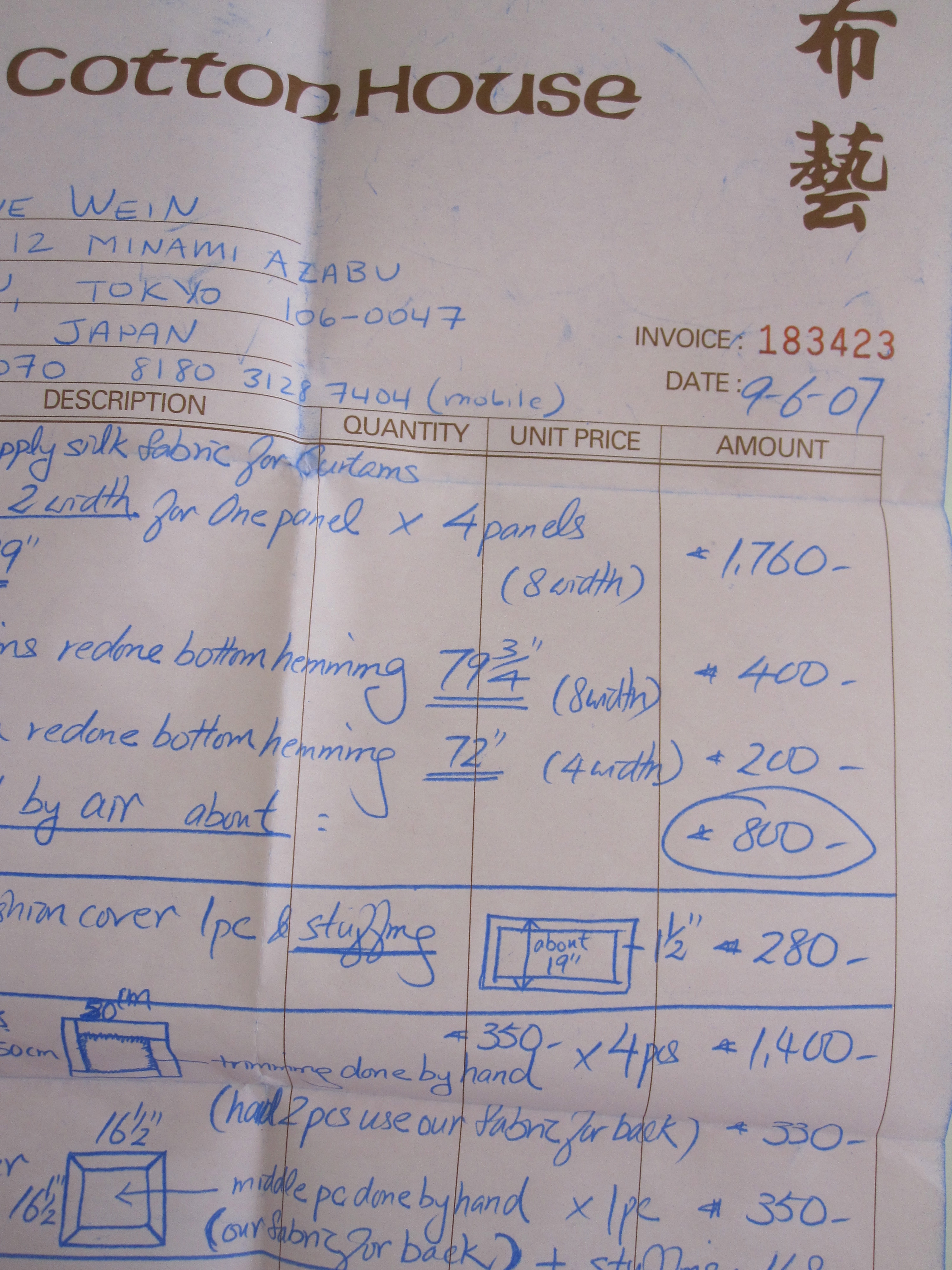 This is one of those posts that I can’t help start with the punch line. Compare the date on the receipt to the left (9-6-2007) with today’s date and it will give you an idea of just how long this project has been in process. Actually, in truth, it has been in process for many more years than that, but its “active phase” has been over these past 5 years.
This is one of those posts that I can’t help start with the punch line. Compare the date on the receipt to the left (9-6-2007) with today’s date and it will give you an idea of just how long this project has been in process. Actually, in truth, it has been in process for many more years than that, but its “active phase” has been over these past 5 years.
At some point many years ago I found a group of antique quilt squares in a standard pineapple pattern, but made out of classic crazy quilt fabrics including satins, silks and velvets. I can’t quite date them, but they must be late 19th to early 20th century, part of an unfinished quilting project, that found their way to an antiques fair. With no clear idea of how I would use them (pillows perhaps?) I purchased them and put them away. Years later I unpacked them from my shipment when I arrived in Japan and was happy to rediscover them.
For the non-quilters out there, the pineapple pattern starts with a central square to which narrow strips of trapezoidal fabric are sewn, creating a saw tooth effect. It can be a very busy quilt block by varying the color every row, or different effects can be achieved by holding the colors steady or shading them progressively. If this part of the post particularly interests you, there is a nice overview and example of pineapple block making here.
The ease of finding vintage Japanese textiles and the link between crazy quilts and Japan inspired me to design pillows with the quilt squares at the center and a border made of vintage obi (kimono sashes). I spent months searching out the perfect obi for each square, both in terms of color and variety of pattern. In addition, I needed a different trim for each pillow to cover the juncture where the quilt block met the obi. For this blue one I was lucky to have some antique French velvet trim, another of those purchases made years ago (in this case in Paris at Port de Clingancourt) with no clear use in sight.
The odd colors in this square, a golden honey and pale seafoam mixed with burgundy velvet center and corners proved challenging, but this large-scale repetitive obi pattern proved perfect.
For the varying shades of chartreuse and green in this pillow I went with a pale obi, thinking it would make a nice contrast.
Somewhere along the way I pulled out this old embroidered Chinese patch and paired it with a kaku-obi (men’s obi). While the other pillows would have log cabin corners, I planned for this one to make use of the graphic stripes in the kaku-obi and have mitered ones.
And there was one in a completely different colorway, which I could use in my bedroom with a plain velvet border and pretty ribbon trim.
After numerous broken needles on my sewing machine, I decided professional intervention was necessary. Therein begins the story of the receipt. On a trip to Hong Kong in September of 2007 I brought them to my usual seamstress and asked her to make the pillows, along with some curtains for my house in Tokyo. I paid her and left, sure I would see them within a few weeks. The curtains came promptly, but somehow the pillows never came. I called her repeatedly in the beginning, but she could not seem to get any of her regular workers to make them. I offered more money, but she wouldn’t take it. She just kept saying she would get them done.
In the months that followed I remembered to call intermittently. Over time, the calls became further and further apart, until I had just about forgotten entirely about them. Then an article in the January 2011 Martha Stewart Living about log cabin quilting, in particular the photo of throw pillows below, reminded me of them and made me determined to get them finished. As Hong Kong was a stop on our evacuation-vacation last spring after the earthquake, I visited the tailor yet again, persuaded her to complete them and left my very kind friend who lives there to follow-up.
I am not the first to use obi to make throw pillows. Many designers and pillow makers take advantage of the heavy brocades and gorgeous colors and patterns available. More often than not, the obi is run down the pillow vertically, bordered with trim and fabric on either side, much like these from Stephen Miller Siegel. And having seen the price tag on these babies, I am all for the DIY or semi-DIY version – these would not be at all difficult to make – as the obi could be sewn on top of an existing pillow.
Here, an obi has been used on a chair in a similar long fashion, reminding me a bit of Muriel Brandolini‘s signature chairs. Just a gorgeous application!
In other cases, the long narrow aspect of the obi is used to make a bolster shaped pillow, often without any additional trim, much as in this iconic 1969 photo of Cecil Beaton’s London home.
My friend D has recently whipped up these similar obi pillows, adding the perfect accent of color and comfort to her deep sofa. It took her no time at all as obi are double-sided and hollow – all she did was cut, stuff and sew up the short side seam with an invisible stitch!
As for my pillows, thanks to my ever vigilant friend, they finally arrived finished. It took me a few months to find some down pillow inserts here in Tokyo, but even that is now complete. The question that remains is where to use them, although in the meantime I have deployed them to the Chesterfield. I love the way the sawtooth edges, which look almost like pinwheels, pick up on the angles in the kilim rug. Click on the photo to see the details up close – they really are spectacular!
And here is the pale pinky one on the velvet settee in the master bedroom.
 And speaking of pillows, we have chosen a winner for the ZAK + FOX pillow giveaway. Drumroll, please! The lucky entrant is number 8, none other than Angela, a reader from Belgium who loves all things linen and all things Japanese. Congratulations!
And speaking of pillows, we have chosen a winner for the ZAK + FOX pillow giveaway. Drumroll, please! The lucky entrant is number 8, none other than Angela, a reader from Belgium who loves all things linen and all things Japanese. Congratulations!
Related Posts:
A Curtain’s Leading Edge…a New Idea for Kaku-obi
Japan-a-mania…Cracked Ice and Crazy Quilts
Image credits: 1, 3-7, 13-15. me, 2. via Get Creative, 8. Martha Stewart Living January 2011, photo credit: Ditte Isager, 9. Stephen Miller Siegel via 1st dibs, 10. via Eclectic Revisited, 11. Architectural Digest Fall 1969, 12. Elle Decor November 2009, photo credit: Pieter Estersohn


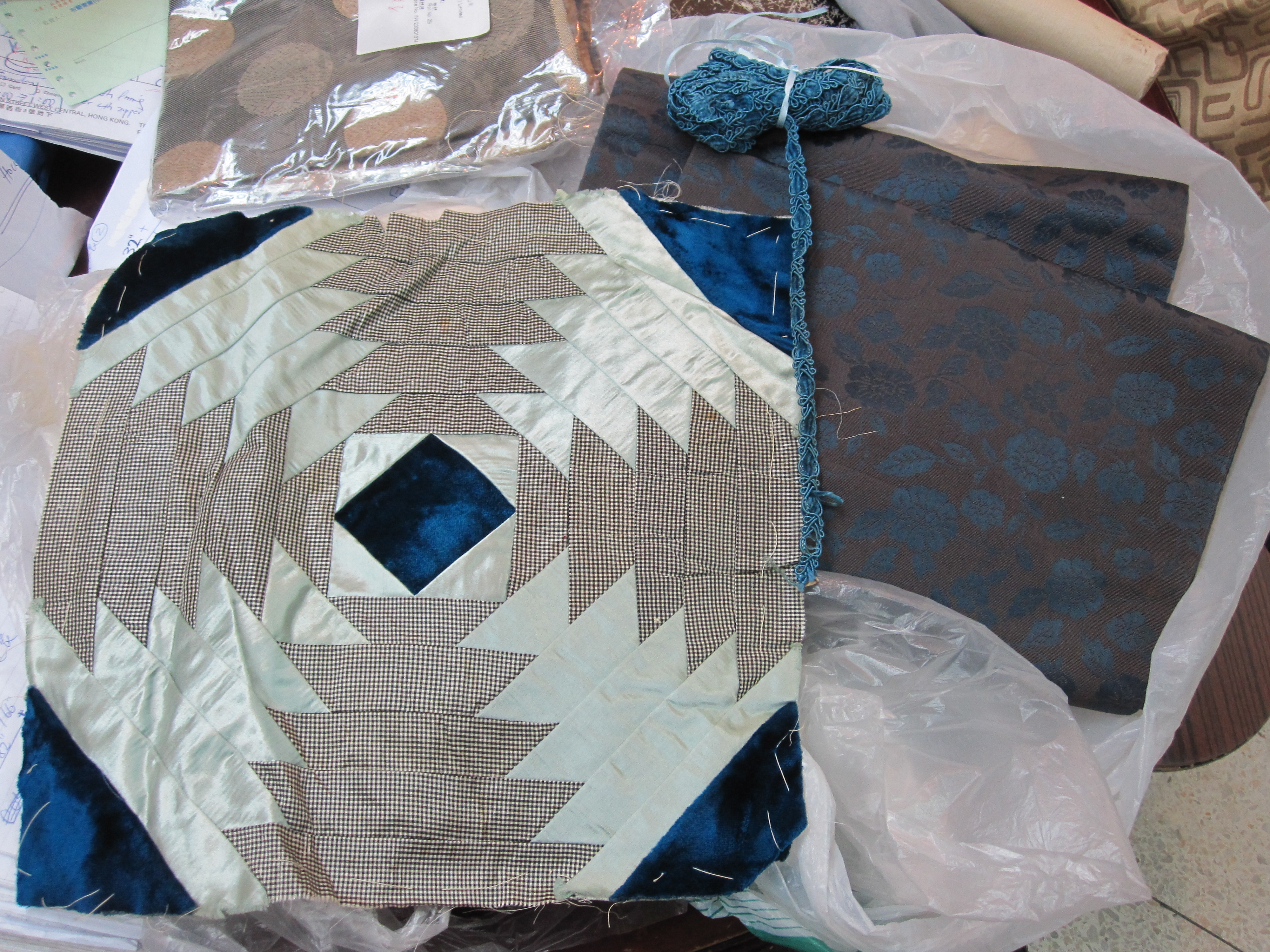



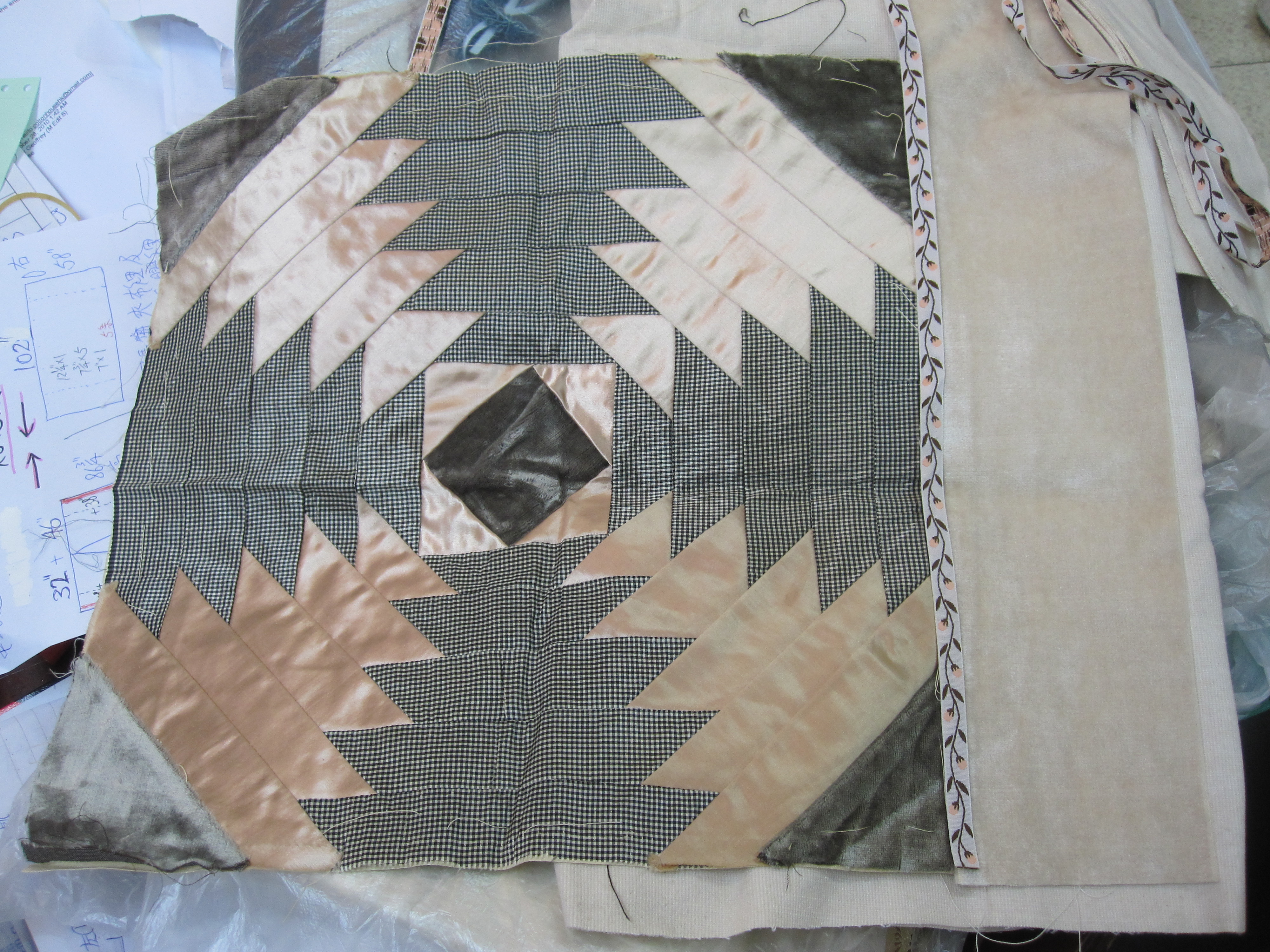

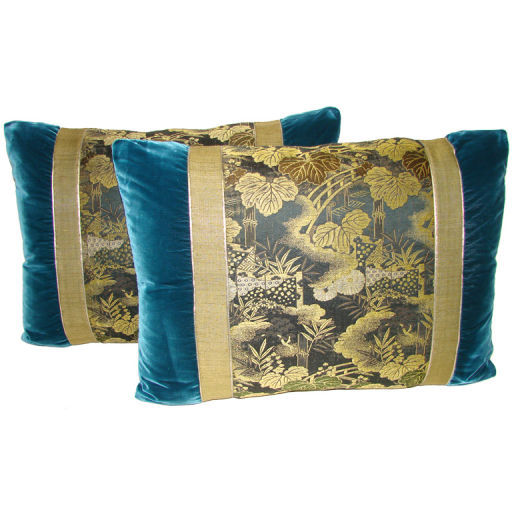


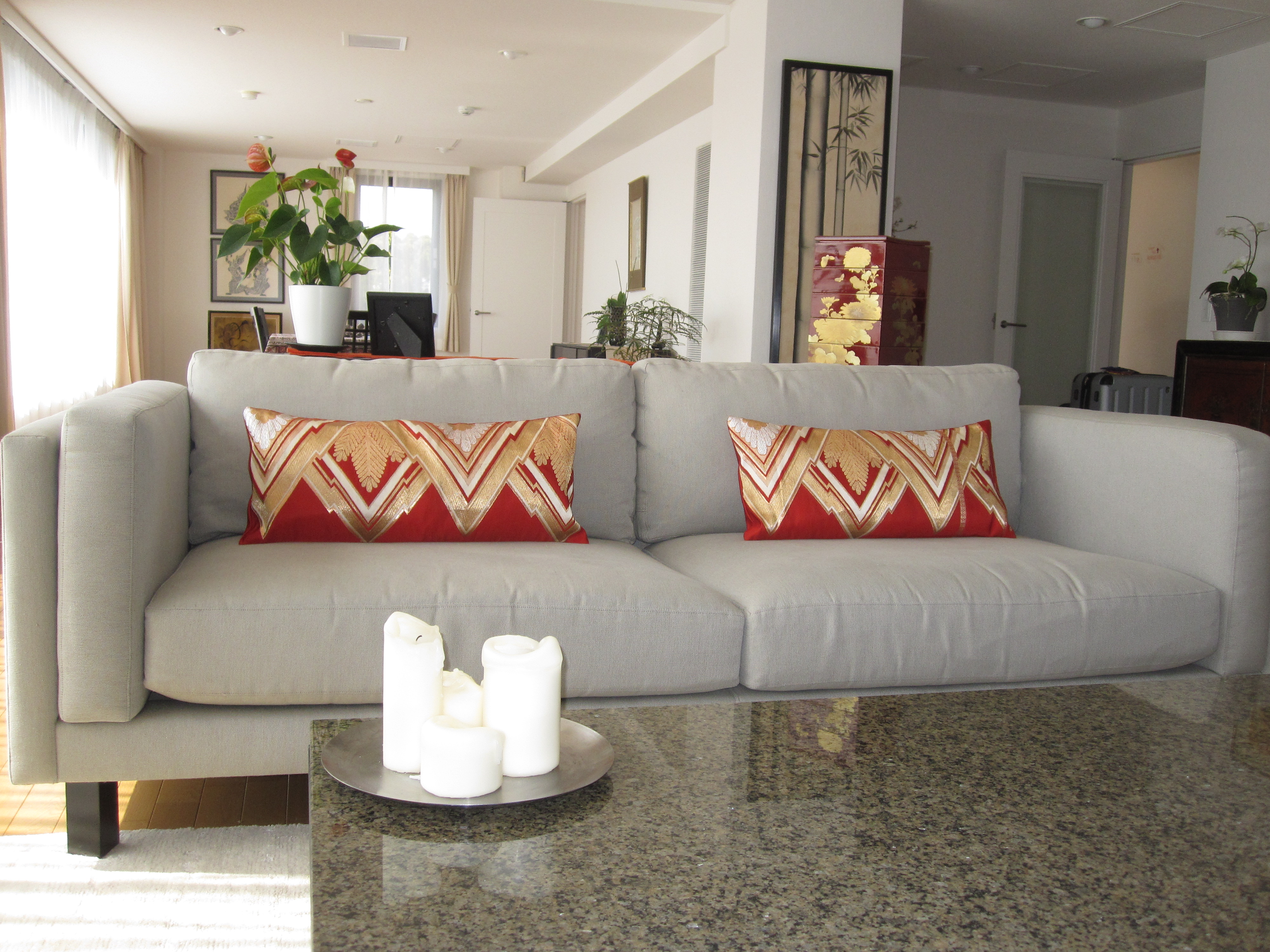
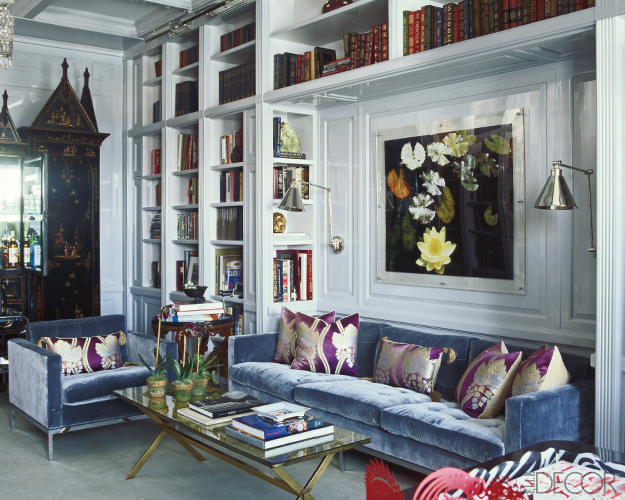
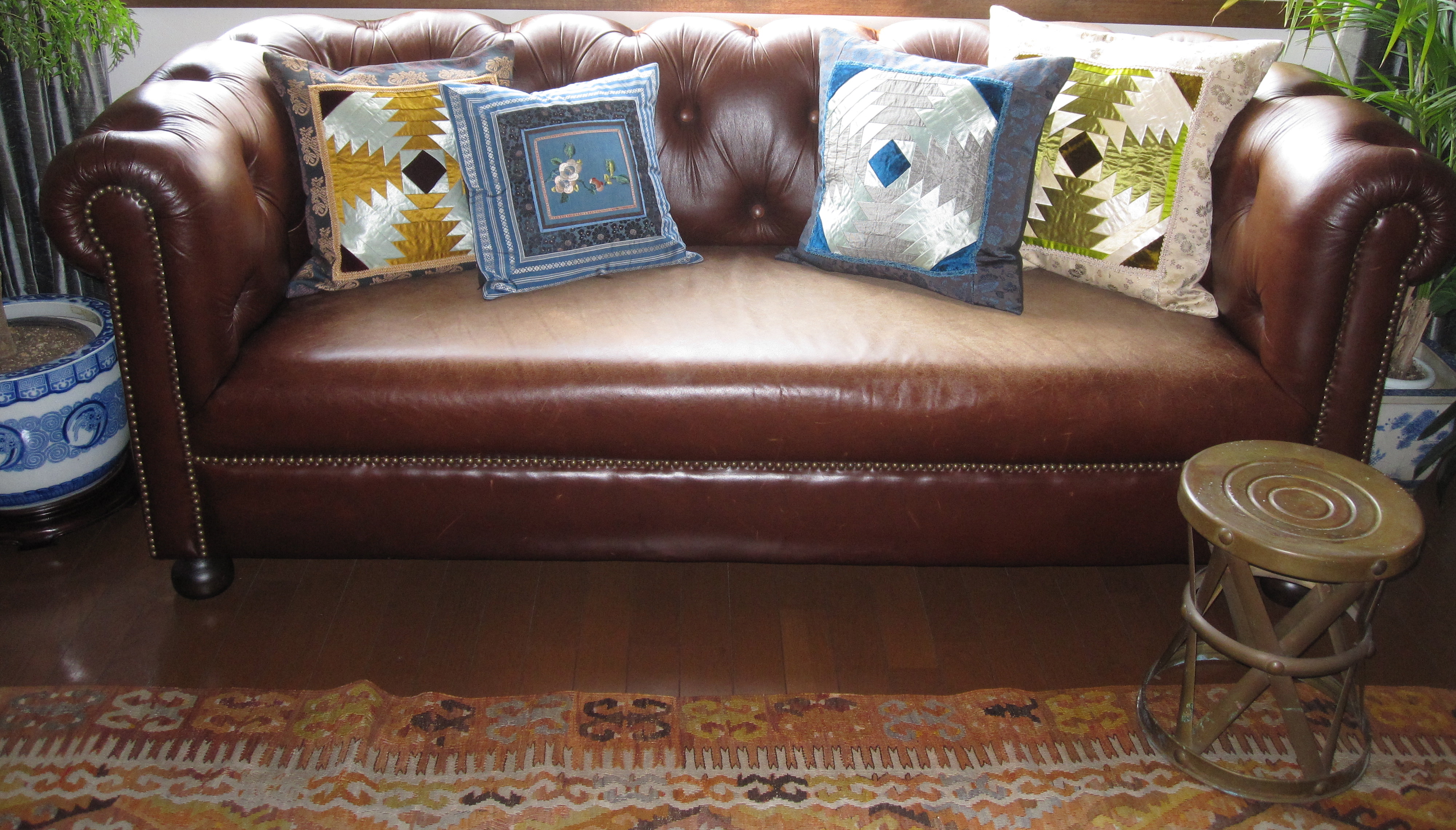
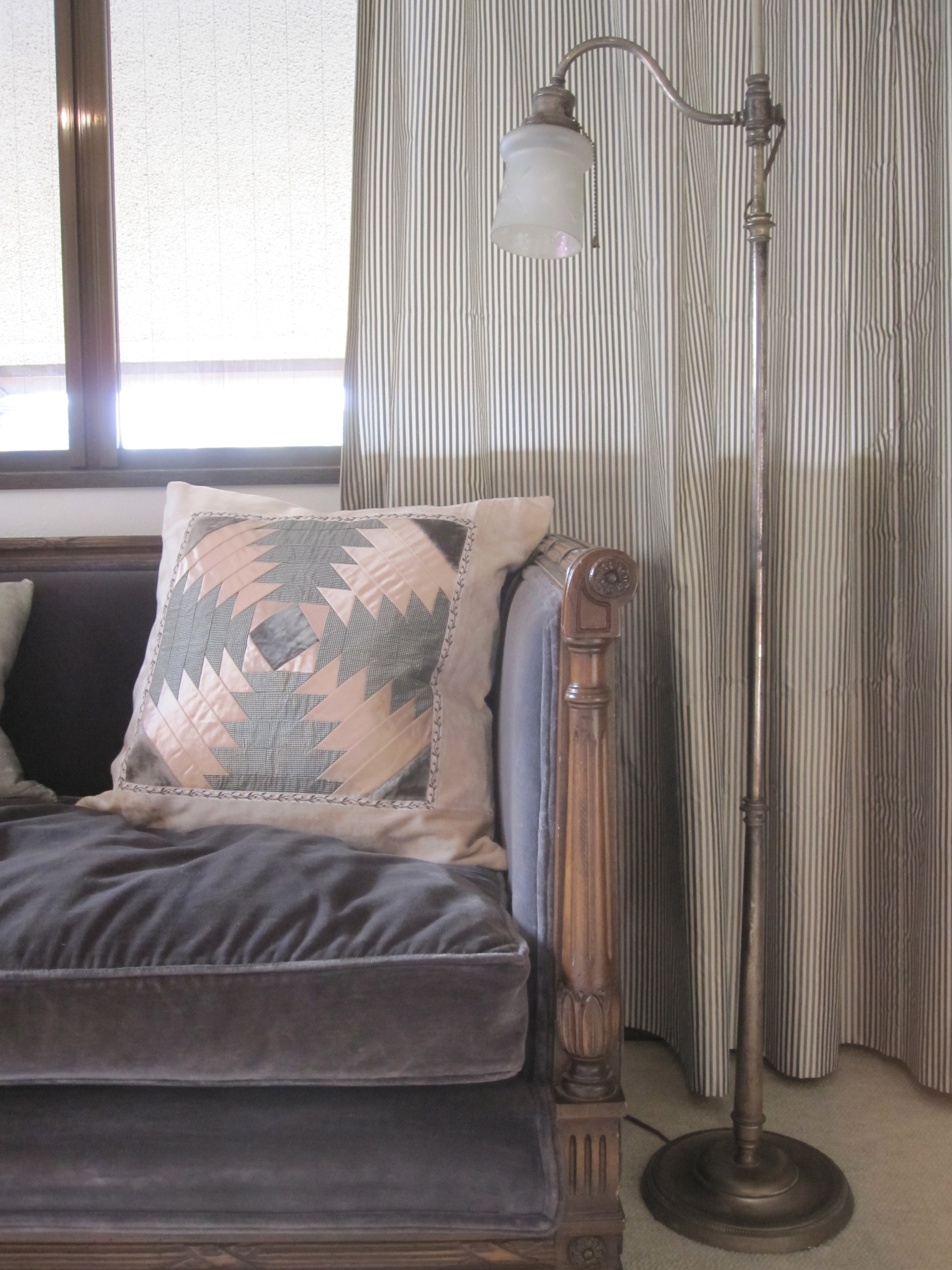
Congratulations! All’s well that ends well.
Oh my goodness, I won! I never win anything, honestly! Will they contact me?
Love this post, you are such a clever girl, I particularly love the cushion on your velvet sofa which I love to death! Is that a piece that you shipped over there or did you find it in Tokyo? Have a lovely weekend J.
Angela x
It seems so apropos that you have won it – Please send me your address under separate cover in a private email. And the velvet settee came with me of course – not a Tokyo purchase. The Chesterfield was made in Shanghai after I got here and shipped over.
________________________________
absolutely gorgeous. i love diy although i am a hopeless di don’t. and i love to have things in my home that tell a story and your pillows certainly do.
Hey Jacqueline, i’ll send you an email with my address and thanks!
LOVE them all so much and I’m smiling at this post because right about the time we met I bought a Hoso obi to turn into pillows like the Siegel ones you shared (but of course haven’t found time for that project yet!).
I think my favorite is the one for the MBR – that color palette is so you! 🙂
Jacqueline that pillow, I spent few minutes looking at it, a good story, love it!!